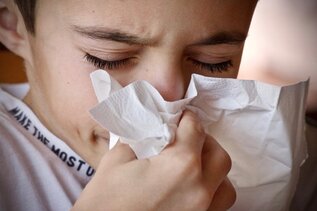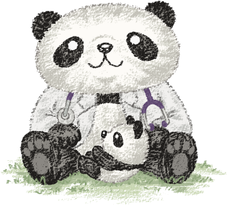|
The common cold involves an array of symptoms including runny or stuffy nose, congestion, fever, sore throat, cough, hoarseness, red eyes, and swollen lymph nodes in the neck. A cold or URI is a viral infection of the nose and throat.
Cold viruses are spread from one person to another by droplets through hand contact, coughing, and sneezing, not by cold air or drafts. Since there are up to 200 different cold viruses, healthy children still commonly contract six to ten colds each year. A typical course of cold symptoms may include a fever that lasts 3 days, nose and throat symptoms that last 1- 2 weeks, and a cough that may linger for 2 to 3 weeks. The main things to watch for are secondary bacterial infections such as ear infections, yellow drainage from the eyes, sinus pressure or pain, or difficulty breathing. Home care remedies usually do not impact how long a cold lasts, but can relieve many of the symptoms. Examples of home treatment for associated symptoms include:
The older child should try to gently blow his nose after instilling the saline drops. Use nasal washes 2-4 times per day or whenever your child is having trouble breathing through his nose. When your child sleeps you may use a cool mist humidifier in his or her room. The most effective steam room, however, is your smallest bathroom with the shower running on hot. Sit in the steamy room with your child for 20 minutes three or more times a day.
Comments
|
AuthorThe staff of Panda Pediatrics, located in Washington, D.C. Categories
All
Archives |
|
Schedule your visit today!
|
HOURSMon: 9am-5pm
Tues: 9am-5pm Wed: 9am-5pm Thurs: 9am-5pm Fri: 9am-2pm Closed daily 12pm-1pm. |
Phone: 202-466-5350
Fax: 202-466-8555 After Hours: 703-535-1856 Email: [email protected] Billing: 1-888-969-3735, option# 1 |
ADDRESS2440 M Street NW
Suite #422 Washington, DC 20037 POLICIES |

 RSS Feed
RSS Feed

